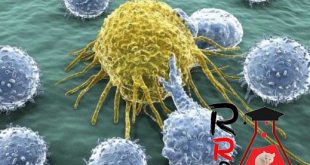Wood technology turns body heat into electricity

how to convert body heat into electricity ? There is a new study showed that new wood-based technology would open the way to converting human body heat into electricity, to know the details, you can continue reading this article from recent research studies
depending on the idea of harnessing the channels inside the trees to force the water to move through their roots, stems, and leaves; A research team at the University of Maryland performed a study published in 25 March 2019 in the journal Nature Materials, through this study the team thought that they can harness the heat inside the body to get energy by using tiny and charged channel walls beside the utilization of nanostructure nature of wood.
Naturally, the wood converted into a flexible material which produces the energy from ions, and this also runs on inside the human body, so, any raising in the body temperature can be efficiently used to produce energy (ionic voltage).
how to convert body heat into electricity ?
The study teamwork depends on using a type of wood called (basswood) which known by its fast growth and its less harmful impact on the environment, but the scientists treated this wood by removing two components which are:
- lignin: this material responsible for the strength and the brown color the of wood.
- hemicellulose: and this material has a role in binding cells layers together.
This treatment process of the wood makes the remaining cellulose more flexible, besides converting cellulose type 1 to cellulose type 2 which considered a key to reinforce ion conductivity.
A thin membrane which made of a very thin slice of basswood bordered by electrodes made of platinum, besides sodium electrolyte which penetrates the cellulose, this system can regulate the ion flow inside these charged channel walls, thus it results in the generation of an electrical signal.
Said Tian Li, (the author of the study), said that these channels can produce an electrical field which appears on (Nanofibers), therefore, it helps strongly in the regulation of ions movement in the case of the thermal gradient.
Li also adds that they are the first to present this type of membrane, and because of its unique properties, it can be used by nanofluidics, the application of sustainable cellulose into nanoionics, and molecular streaming.
Source
https://www.nature.com/articles/s41563-019-0315-6
For more science news and recent studies please visit: Bio-Nano-Science and Recent Research Studies
 Recent Research Studies Recent Research Studies
Recent Research Studies Recent Research Studies 




4 comments
Pingback: How to remember to forget | new research for erasing memories - Recent Research Studies
Pingback: useful microbes eat electricity and produce bioplastics - Recent Research Studies
Pingback: Type 2 diabetes: is kale juice good for diabetics - Recent Research Studies
Pingback: health benefits of watermelon - Recent Research Studies